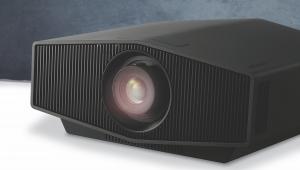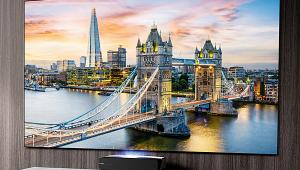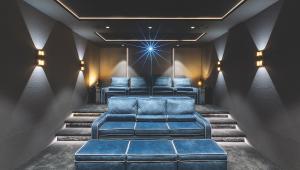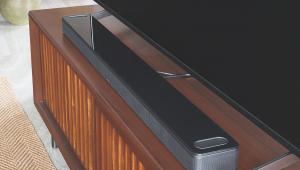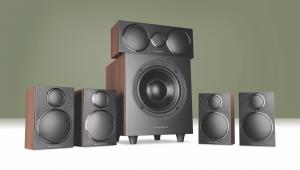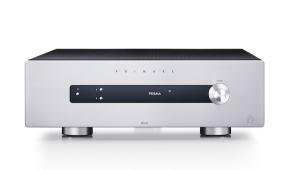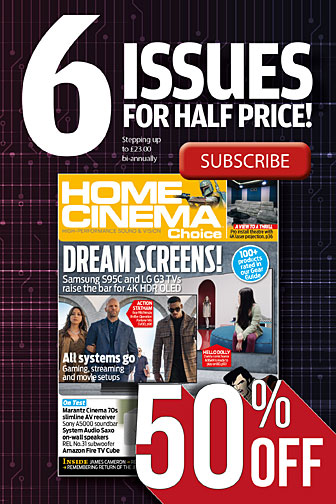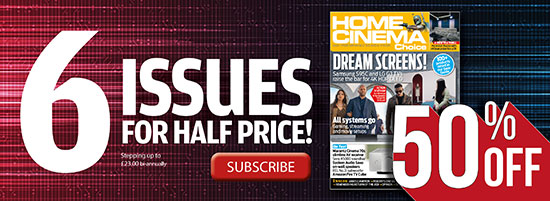Optoma GT5000 review
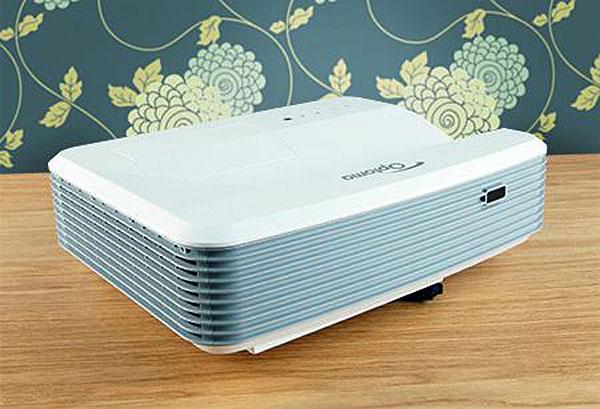
 It's perhaps surprising that the concept of ultra short throw projectors for the home hasn't taken off more readily. Unlike traditional home cinema beamers, which cast images across 3m to 5m, UST models like this £1,000 Optoma GT5000 throw up a 100in image from just 30cm.
It's perhaps surprising that the concept of ultra short throw projectors for the home hasn't taken off more readily. Unlike traditional home cinema beamers, which cast images across 3m to 5m, UST models like this £1,000 Optoma GT5000 throw up a 100in image from just 30cm.
The advantages are obvious. Ultra short throw projectors have a negligible footprint, and with no need to ceiling-mount, there's no possibility that your audience will cast distracting shadows when they walk in front of the unit. Nor do you need to work out how to hide trailing HDMI cables.
Typically, such projectors are the province of corporate boardrooms and educational facilities, where they’re often found bolted to rigs high up on the wall. But you can locate the Optoma GT5000l on everyday AV furniture, up close to a screen or white surface.
Design-wise, the GT5000 makes an effort to be living-room friendly, as it has to to. The chassis is all white and grey lines. The lens is recessed in the top of the unit, with connections ahead. Helpfully, input legends on the connections panel are printed upside down, so they read the right way up when you peer down at them from the top. Here you’ll find two HDMI inputs, dual VGA inputs, 3.5mm and stereo phono audio options, component video, Ethernet and RS232 control. There's also a 3D sync DIN (with support for DLP’s 144Hz rapid refresh mode) – although no 3D glasses are supplied in the box. There's even a 12V trigger for electric screen integration.
Setup is a little different to the norm. Given the optical arrangement required by short-throw mechanics, you don’t get a standard focus ring to spin, instead there’s a paddle slider protruding from the base, which snaps the image into sharp relief. Focus is fixed, and the projector's throw ratio is 0.25:1.
In most instances you’ll simply need to square up the projector to the display area. Vertical keystone correction is on hand to fine-tune the image, offering +/- 20 degrees of adjustment, along with a generous image shift.
As mentioned, a 30cm throw distance yields a 100in picture. The further the GT5000 is positioned from your screen, the larger the image becomes. I found I could easily fill the best part of an entire wall, albeit with increasing loss of edge definition. Still, if what you’re after is more fun than film-school, you’ll not be disappointed at the scale available.
Beneath the lid, there’s a single 0.65in DarkChip 3 DLP device. As you’d expect from Texas Instruments, the GT5000 is also BrilliantColor-enabled. However, there are no image interpolation modes, so don't expect absolute motion detail to be retained in fast-moving scenes.
The PJ claims a brightness rating of 3,000 Lumens, which can be can be considered extremely bright. It's therefore designed to work in well-lit environments. A GT5500 step-up model goes even brighter.

Image quality resides on the right side of respectable. Guillermo del Toro’s Crimson Peak is a lush, highly-detailed Blu-ray haunter which this Optoma tackles with appropriate spirit. Shadow detail is a tad crushed, but the dynamics remain engaging (Optoma quotes a contrast of 23,000:1). While I was aware of DLP's rainbow fringing during scenes of high contrast, it was only a sporadic nuisance. When Crimson Peak’s black and inky spectre first appears and climbs into the bed of our terrified heroine, there's plenty of spine-chilling detail onscreen.
The projector has an onboard sound system boasting 16W of amplification, but it’s thin and squawky. The noise it makes just about passes muster if audio is an afterthought, but even undiscerning movie fans and gamers will want to partner the projector with a soundbar or AV system.
Overall, colour fidelity isn't perhaps on a par with Optoma’s dedicated home cinema PJs. Skin tones sometimes struck me as either overcooked or a little pallid. Gaming lag isn’t an issue, though. Using the projector for a bout of Overwatch (PS4), I felt no sense of delay or microsecond obfuscation. Optoma rates lag at 33ms.
While the GT5000 may be pitched as an entertainment device, its corporate roots can be discovered. Evidence of the model's business leanings is found in the fact that the remote control doubles as a laser pointer. And while I could be persuaded that this projector would be a fun addition to a kids' den, there's no way I'd leave my little nippers to play optometrist with a laser pointer remote...
That aside, this is an easy machine to live with, mainly because there’s not an awful lot of control to master. Display modes comprise User, Movie, Bright, Presentation and Blackboard (more corporate giveaways), with the usual adjustable parameters available – including Brightness, Contrast, Colour, Tint, Sharpness and variable gamma (1.8, 2, 2.2 etc). Those who don't want to tweak should stick to Movie.
The projector is a little on the noisy side in general use. To keep things manageable, ensure the lamp is running on Eco, for 28dB or thereabouts. Lamp life in this mode is said to be a generous 6,500 hours.

Where Optoma’s ultra short throw proposition starts to get particularly interesting is with the brand's new ALR100 screen. This is a fixed-frame 100in design that can be purchased separately (for £900) or as part of a bundle with the GT5000 for around £1800.
This ambient-light-rejecting screen (hence the ALR name) has a silver grey finish and is designed to improve contrast and colour performance in rooms with ambient light (as you might prefer for gaming or sports).
It’s an aggressive price for such as screen. Alternatives from Screen Innovations, Elite and Projecta run from £3,000 for the Black Diamond and £2,640 for the Parallax to £1,900 for the DarkStar.
What we have here is quite a tempting budget option. While the ALR100 doesn’t work miracles in bright sunshine, it makes quasi-daytime projection a more convincing proposition. Optoma says the ALR screen rejects 90 per cent of ambient light (perhaps somewhat optimistically), and therefore is a more affordable (not to mention practical) bigscreen alternative to a 100in LCD telly.
The fabric itself attaches to the frame with a multiplicity of tension springs. Cosmetically, it looks suitably televisual, thanks to a thin 16mm bezel. Gain is rated at 0.42.
What I found interesting was not so much its bright-room performance, but the way in which the fabric transforms the projector’s black level skills. What is dark grey becomes almost solid OLED-style black, and colours also get more of a pop. Gravity (Blu-ray) is always a challenging exercise for projectors, not least because it combines deep black space with some truly bright white peak highlights. On matt white fabric, you’d be forgiven for thinking that low Earth orbit is a predominantly dark grey place, but on the ALR screen it’s transformed into a startling black void.
The short-throw advantageOverall I rather like Optoma’s GT5000, not least because ultra short throw projectors make an awful lot of sense for the average home. This model is easy to accommodate and entertaining to use. While it doesn’t offer the same level of image fidelity that a dedicated home theatre projector of similar standing might boast, it has some cool advantages all of its own. For gaming and sports sessions it’s a hoot – and the ability to fill a wall with flickering images from apparently nowhere borders on science fiction. Optoma’s partnering low-cost ALR100 screen similarly gets a thumbs up. However, that laser pointer remote just has to go.
Specification
3D: Yes. Active shutter spex optional; DLP 144Hz rapid refresh rate support 4K: No. 1,920 x 1,080 Full HD Connections: 2 x HDMI inputs (1.4a); 2 x VGA inputs; 1 x composite video; 1 x 3.5mm audio inputs; 1 x 3.5mm audio output; stereo audio input; RJ45 Ethernet; RS232; 12V trigger; microphone input; USB-A power; 3D-Sync Brightness (claimed): 3,000 ANSI Lumens Contrast (claimed): 23,000:1 Dimensions: 385(w) x 310(h) x 120(d)mm Weight: 4.78kg
Features: Single 0.65in DarkChip 3 DLP device; 16W built-in audio; 0.25:1 throw ratio; rated power consumption: 310W Bright mode/260W Eco mode: 28dB fan noise; UXGA, SXGA, WXGA, HD, XGA, SVGA, VGA computer support; 6,500-hour maximum lamp life; vertical keystone correction; image shift
 |
Home Cinema Choice #351 is on sale now, featuring: Samsung S95D flagship OLED TV; Ascendo loudspeakers; Pioneer VSA-LX805 AV receiver; UST projector roundup; 2024’s summer movies; Conan 4K; and more
|




